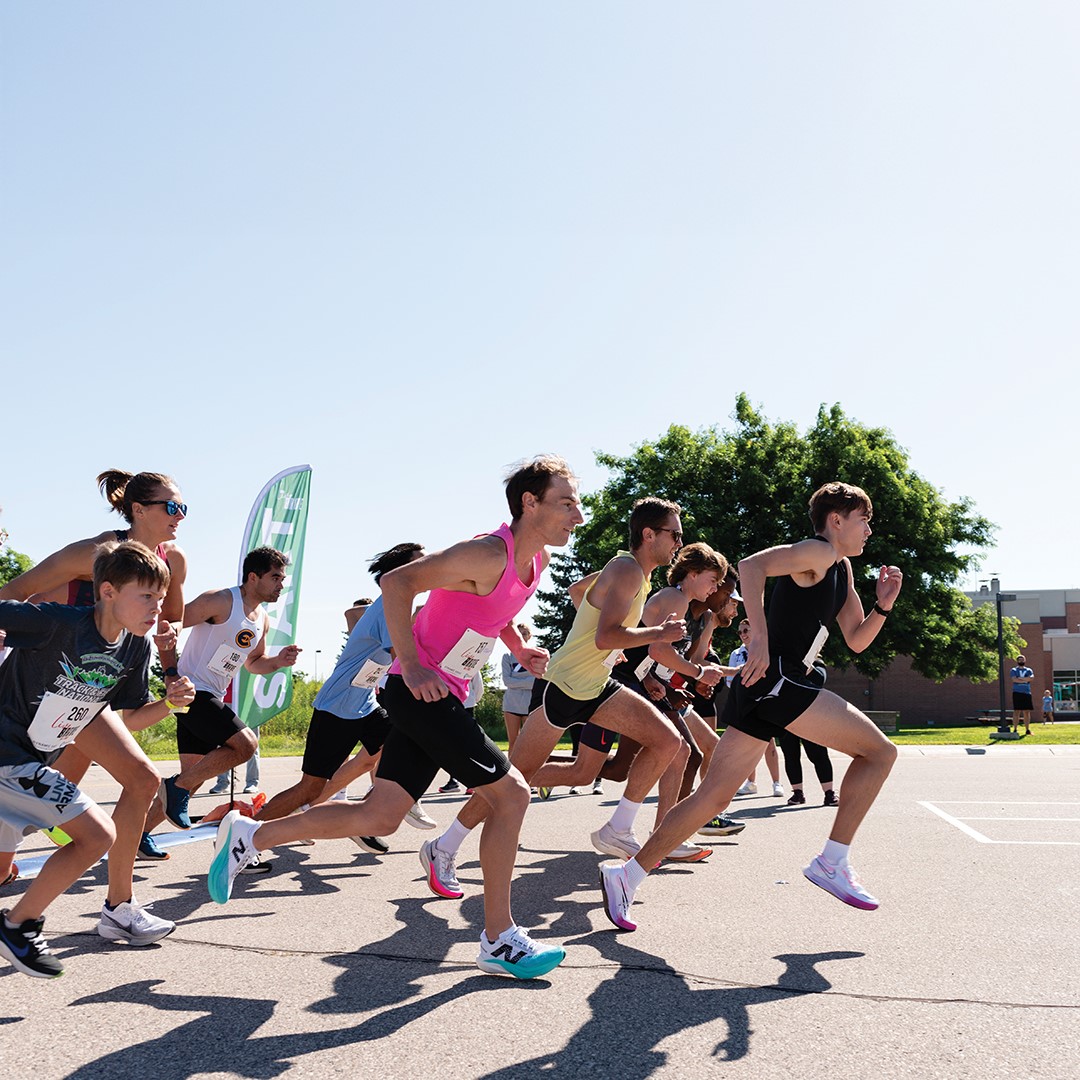
Whether you’re on a walk or at the dog park, always provide access to fresh, cool water. Veterinarian Jodene Beck recommends a portable water bowl. iStock/PetkoNinov
Keep Fido cool in the water and during high heat and humidity.
Summer—endless sunshine and hot weather. Some of us live for a Midwestern summer, but others (like our pets!) can get exhausted during high temperatures or humidity. Over the next few months, keep your four-legged friends safe with these tips from Jodene Beck, a veterinarian at Hudson Road Animal Hospital.
“Heat exhaustion and heat stroke are serious conditions that can occur in dogs, especially during hot weather or after intense exercise,” Beck says. “Recognizing the signs early is crucial for prompt intervention.” She notes that signs include collapse; bright red or pale gums; drooling; elevated heart rate; excessive panting; vomiting or diarrhea; unsteady gait; or weakness or lethargy. “If any of these signs are observed, it is essential to move the dog to a cooler environment, provide water and seek veterinary care as soon as possible,” she says.
Providing access to fresh, cool water is key. While on outings, Beck says to bring a portable water bowl to encourage regular drinking. Moreover, keep your pup cool by swapping your midday walk for morning or evening activity; ensuring a shaded area is available during your activity; using frozen treats; and utilizing cooling products to lower body temperature. “Keeping dogs cool during summer activities is essential for their health and comfort,” Beck says. She adds that paw wax, cooling paw pads, and protective sprays and balms are good choices. “Each option has its pros and cons, depending on your dog’s tolerance and activity level. Booties provide the best protection while waxes and sprays are easier for dogs who dislike wearing shoes,” she says.
If your dog loves a day on the lake, make sure to check the Minnesota Department of Natural Resources (dnr.mn.state.us) and Minnesota Pollution Control Agency (pca.mn.state.us) for updates on algae. “Toxic algae blooms, often found in freshwater bodies like lakes and ponds, can pose serious health risks to dogs,” Beck says.
Symptoms of toxic algae poisoning include: gastrointestinal issues like abdominal pain, diarrhea and vomiting; neurological problems, including confusion, difficulty breathing, lethargy, tremors and weakness; skin reactions such as irritation or rashes; excessive salivation; and jaundice, yellowing of the eyes or gums. If you suspect exposure, remove them from the contaminated water, rinse your dog with clean, fresh water and seek veterinary care if they show signs of illness. Owners should also take action for themselves, to ensure they’re not in contact with the algae.
Surface Safety
Surfaces such as sidewalks, sand and artificial turf are prone to high temperatures. Jodene Beck shares several precautionary measures to assess whether these surfaces are too hot for a dog’s paws.
- Hand Test: Place your bare hand on the surface for about 7 seconds. If it is too hot for your hand, it’s too hot for your dog’s paws.
- Foot Test: Walk barefoot on the surface for a short distance. This can help determine if it’s too hot for your dog’s paws.
- Time of Day: Surfaces are hottest midday, so plan walks during cooler hours such as early morning or late evening.
- Shade and Wind: Check if the area has shade or is exposed to wind. Shaded areas may be cooler, while direct sunlight increases surface temperatures.
- Use a Thermometer: Use a surface thermometer to check the temperature of the ground. A pavement temperature of 85 F may be too hot.
- Observe Your Dog: Pay attention to your dog’s behavior. If they hesitate to walk, lick or lift their paws frequently or show signs of discomfort, it’s too hot for them.
Hudson Road Animal Hospital
8154 Hudson Road; 651.739.0117






















